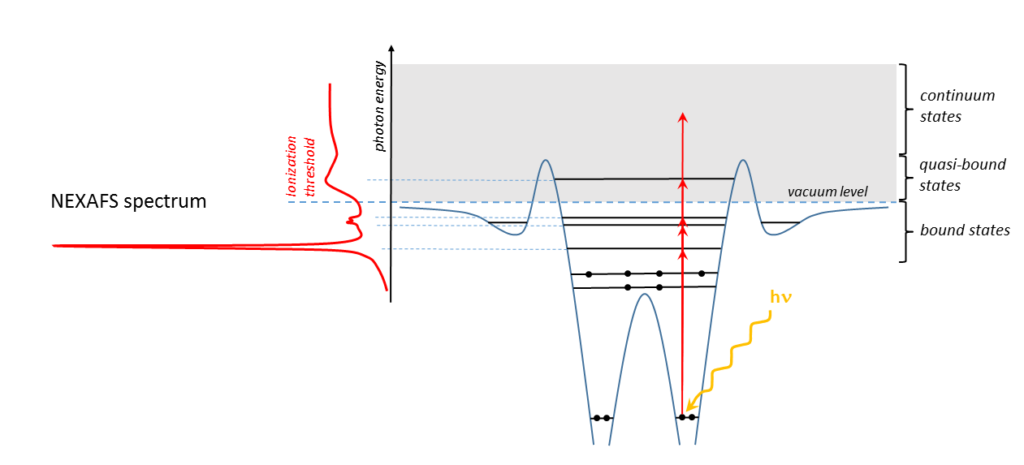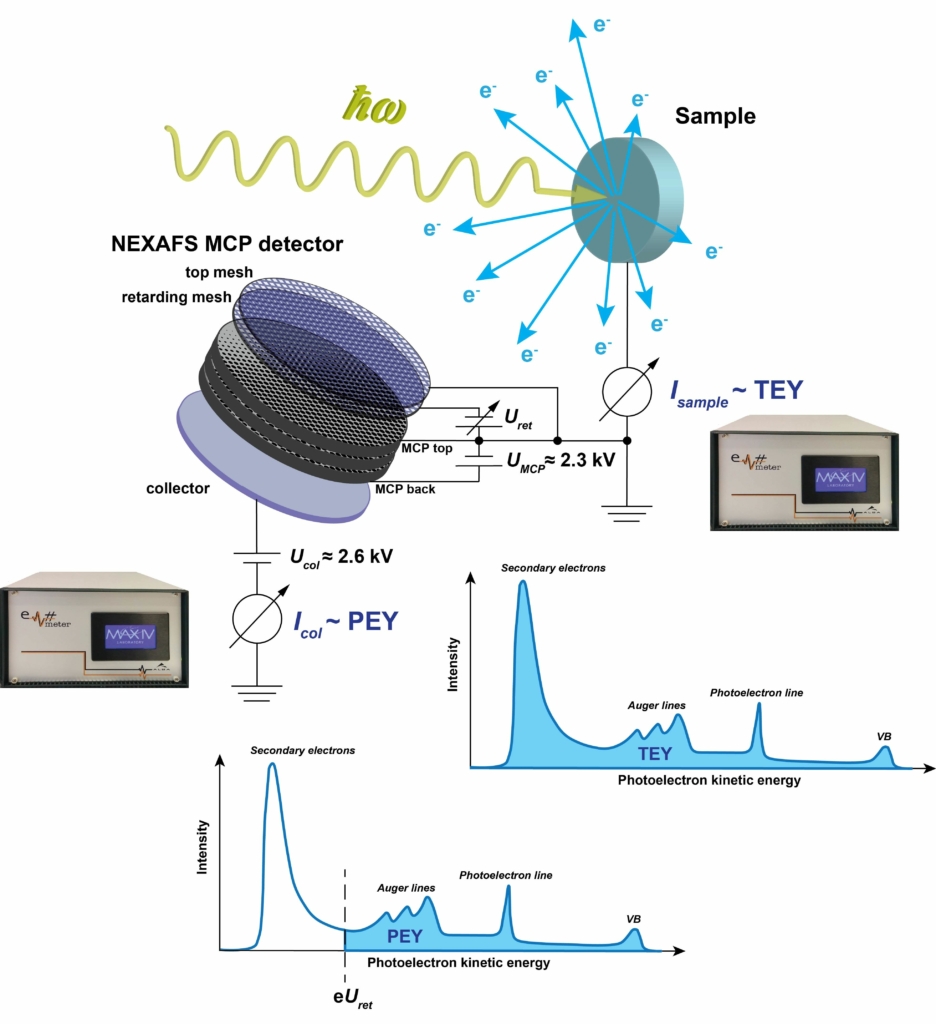X-ray Absorption Spectroscopy (XAS) is a powerful and well-established tool, which yields element- and symmetry-specific information about the distribution of unoccupied states in energy- and space domain. As a result of the X-ray photon absorption, a core electron may be promoted into various unoccupied states; the probability of this promotion is strongly dependent on the photon energy and experimental geometry. If the kinetic energy of an outgoing electron is small (roughly below 50 eV), it experiences multiple scattering from atoms surrounding the atom-absorber, giving rise to pronounced absorption resonances both below and just above the absorption threshold. In the field of soft X-ray spectroscopy, this low-energy part of the XAS spectrum is called Near-Edge X-ray Absorption Fine Structure (NEXAFS) spectrum.

NEXAFS spectroscopy allows us to get insight into the chemical state of the absorbing atom. In this way information can be gained about its oxidation state, nature and strength of chemical bonding with the nearest neighbors and the electronic structure of unoccupied molecular orbitals or bands. Furthermore, the anisotropy of X-ray absorption can be effectively used for the studies of spatial localization of unoccupied states with certain symmetry and the orientation of adsorbed molecules in respect to the substrate.
These powerful features of NEXAFS spectroscopy make it highly productive in surface- and material-related studies, including for example:
- Molecular adsorption, desorption, diffusion and on-surface reactions
- Molecular self-organization on surfaces
- Heterogeneous catalysis
- Growth of thin films
- Synthesis of 2D- and nanomaterials
- Impurities and defects
The most popular classes of materials studied by NEXAFS spectroscopy are:
- Solar cells, batteries and other energy-harvesting and -storing materials
- Molecular films and architectures for organic electronics
- Catalytic materials
- Sensor materials
- Protective coatings
- Biomaterials
Detection of the NEXAFS spectrum can be realised in different ways (click to enlarge):

The most straightforward method giving access to absolute absorption cross sections is the measurement of transmission through a thin film of sample. However, for soft X-rays the thickness of the sample shall be below 1 mm to be transparent, which is not feasible for many samples. Therefore more practical are methods based on the decay of the core hole, either Auger decay or fluorescent decay. In both methods it is assumed that the detected yield of particles (electrons/ions or photons) is proportional to the amount of the created core holes, thus correctly reflecting the energy dependence of the adsorption coefficient (NEXAFS spectrum).
In the soft X-ray regime, the probability of Auger decay is considerably higher than that of the fluorescence decay; therefore, electron yield is normally the preferred method of detection. It is also much more surface sensitive: the information depth for the total electron yield is up to several nm, and up to 1-2 nm for the partial electron yield. On the other hand, fluorescence yield can be a method of choice for studying in-depth (bulk) structure of materials, as well as electrically charging samples and samples in electromagnetic fields. Energy-dispersive fluorescence yield detectors are also very useful for studying impurities present in small concentrations.
